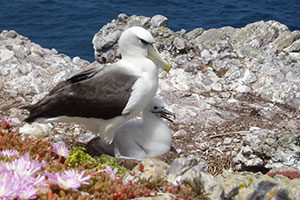The crown-of-thorns starfish (Acanthaster planci) is a poster child for the excesses of top predators, living the high life and contributing to the general decline of the Great Barrier Reef. Viking-like with their spikes and voracious in reach, with enough arms and a lifecycle to beat the fastest-growing corals, the starfish are sucking the life out of the colour-saturated Great Barrier Reef and leaving a trail of feeding scars in their wake.
However, they are also a useful target for those looking at how human intervention might assist ecosystems and species to adapt to a changed environment.
The crown-of-thorns starfish is the type of species CSIRO’s Dr Alistair Hobday and colleagues are looking at to develop intervention options that might help the reef save itself: its adults are easy to see, confined to a large but well-defined area, and they are high on the public agenda. In fact, it’s a model species to promote the developing science of climate change adaptation.
Adaptation science
Adaptation science, says Dr Hobday, is about not just documenting the impacts of climate change but looking at what we can do about it, and working to implement on-ground responses.
“The pace of climate change is rapid compared to historical change, and so we can’t cross our fingers and hope that ecosystems and species will adapt,” he says.
Adaptation science reflects a change from traditional and more passive notions of environmental management focused on conservation, says Dr Hobday. It’s also, crucially, a psychological shift, involving scientists working with on-the-ground resource managers to develop acceptable and efficient strategies that help them feel empowered.
“The question is: What kind of interventions work so that managers have a tool bag of options to help natural systems cope with climate change?”
Crown-of-thorns starfish
Presenting at the recent Climate Adaptation conference in Adelaide, Dr Hobday spoke about the importance of model species like the crown-of-thorns starfish, and described how a coral reef ecosystem model was used to assess the range of intervention options.
These options include hand-picking the starfish from the reef or injecting them with a toxin, and improving water quality by arresting nutrient run-off, both currently in use, or introducing new fish predators and replanting coral. However, the range of management options hasn’t been tested against the long-term effects of climate change
The outcomes of some options pose questions that might concern many interest groups.
For example, a worst-case option might be blasting a deep water canal to divide the north and south sections of the Great Barrier Reef and allow a flush of disruptive currents capable of stopping the crown-of-thorns starfish. It is easy to engineer but difficult to pass legally and currently socially unacceptable.
“We need mature conversations about options that are unacceptable today, but might be considered in future,” says Dr Hobday.
Developing and introducing a coral poisonous to crown-of-thorns starfish is one such option, although that is some way off, Dr Hobday explains.
“It would take a lot of research, and so 20–30 years of development might be needed.”
Shy albatross
In a similar vein, his collaborator Dr Geoff Tuck from CSIRO described the situation for the shy albatross (Thalassarche cauta) which breeds only in Tasmania.

This iconic species nests on islands in one of the fastest warming ocean areas, where biological changes include migration of fish and plankton species further south leaving less-productive waters around breeding colonies.
Adaptation options considered to help the albatross cope with climate change include wind breaks, translocations, artificial nests, reducing disease and reducing bycatch from fisheries. Dr Tuck’s assessment model determines the degree to which each option improves the viability of the population. It may take a combination of options to have the best effect.
So far, they have tested treatment of disease in albatross chicks. This option was first tested in 2014 and monitoring continues, with early results showing a 10% increase in chick survival.
Testing the tools
Testing is key. Dr Hobday says: “Plenty of people make plans, that’s like buying the tool bag. The difference is building and implementing the tools. Australia will be need to be good at testing those tools for animals and ecosystems before climate effects are too great.”
Dr Hobday argues now is the time to engage as many interested parties as possible; from scientists to local authorities and higher levels of government, park management, local communities and the general population, and to develop the best and most acceptable interventions.
Pick the easy options first, he says, and develop a well-modelled strategy.
“It’s a question of working with species and ecosystems that are showing climate-related signals now and that are amenable to intervention, learning the easy lessons first.
“And with an eye at the longer term, having a public discussion about which other species to target, which technologies to test and develop, which laws need changing or permits would be required, and whether education campaigns need to take place.
“We need to start thinking about it today to make sure we are in position to act when needed.”
Read more about adaptation pathways for iconic marine species.
